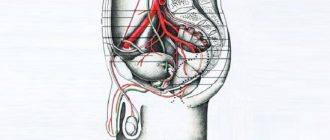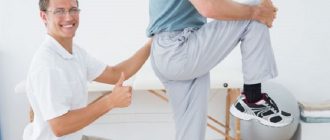As a result of a sedentary lifestyle, the blood circulation process is disrupted, and this leads to congestion in the prostate. This leads to an inflammatory process and swelling of the prostate gland.
Squats for prostatitis are an effective component of complex therapy and a good preventative method. They improve blood circulation and muscles in the pelvic area, which has a positive effect on men's health. To perform them, there are minimal contraindications and no special conditions are required, which makes this method accessible to everyone.
Are squats good for you?
Exercise is beneficial for all forms of disease, as well as for preventing the onset of disease. They improve the condition of muscle tissue and accelerate metabolism in the perineal area.
Squats for chronic prostatitis of non-bacterial origin help eliminate congestion, improve prostate tone, and prevent the formation of adenoma. During the period of exacerbation of the disease, it is necessary to relieve acute inflammation and only then begin classes.
Squats for bacterial prostatitis are recommended to be performed after antibiotic therapy to prevent the spread of infection. In the acute period, it is better to refrain from exercise, but in the chronic period they are very useful.
Squats treat prostatitis, having the following effects:
- blood circulation in the pelvic organs improves;
- the condition of blood vessels improves;
- congestion is eliminated;
- strengthen smooth muscles in the pelvic area;
- The overall tone of the body increases.
Squat with weights
If the exercise is performed to prevent illness or during the recovery period, then, provided you are in good physical shape, you can use weights. Squats with a barbell for prostatitis should be performed with light weight and no more than 20 times in one approach. If the technique is incorrect, the exercise can lead to injury and exacerbation of the disease.
Execution restrictions
The exercise has some limitations; it cannot be performed if:
- acute stage of the disease;
- excess body weight;
- injuries to joints or ligaments of the legs;
- pathologies or injuries of the spine;
- varicose veins and hypertension;
- after surgery.
Squats for prostatitis after 50 years must be performed after consultation with a doctor.
Set of squats for prostatitis
Squats for prostatitis should be done 2 times a day - morning and evening, at least 10 times. Over time, the amount can be increased, but do not do it excessively.
Frequency of classes: 3-4 days a week.
An equally important factor is the correct execution, because otherwise, the exercises can be harmful rather than beneficial. If your health or age does not allow you to squat on your own, you can use a chair as a support.
Classic squats
Place your feet shoulder-width apart and perform the squat while exhaling. It needs to be done at a slow pace. Lowering is carried out without changing the position of the body (without bending forward). Having descended to the lowest point, you need to stay in this position for a few seconds, then slowly rise while inhaling. Heels should not be lifted off the floor.
Plie
Effective loads for developing the muscles of the perineum are the plie squat.
To perform them, you need to spread your legs wide, knees and toes apart. There is no need to squat too deeply; the bend angle may be greater than with the classic version. During execution, you need to tense your buttocks as much as possible and pull in your stomach.
Pelvic lift
We lie down on the floor, bend our knees - heels on the floor. To perform the exercise, as you exhale, lift your pelvis up, squeezing your buttocks as much as possible.
Lunges
This exercise can be done with or without additional weight. You can use a barbell or dumbbells as weights.
To perform, you need to stand up straight, legs slightly apart, back straight. As you inhale, take a wide step forward with one leg, and kneel down with the other. Leg bend angle is 90 degrees. As you exhale, push off with your heel and return to the starting position.
Half squat
This exercise is similar to the classic squat, the difference being the angle of bend of the knees. When half-squatting, the angle should not be less than 100 - 110 degrees.
We place our feet shoulder-width apart, with our toes and knees slightly apart. As we inhale, we squat, moving our butt back, using the gluteal muscles and the back of the thigh. Keep your back straight, slightly arched at the lower back.



